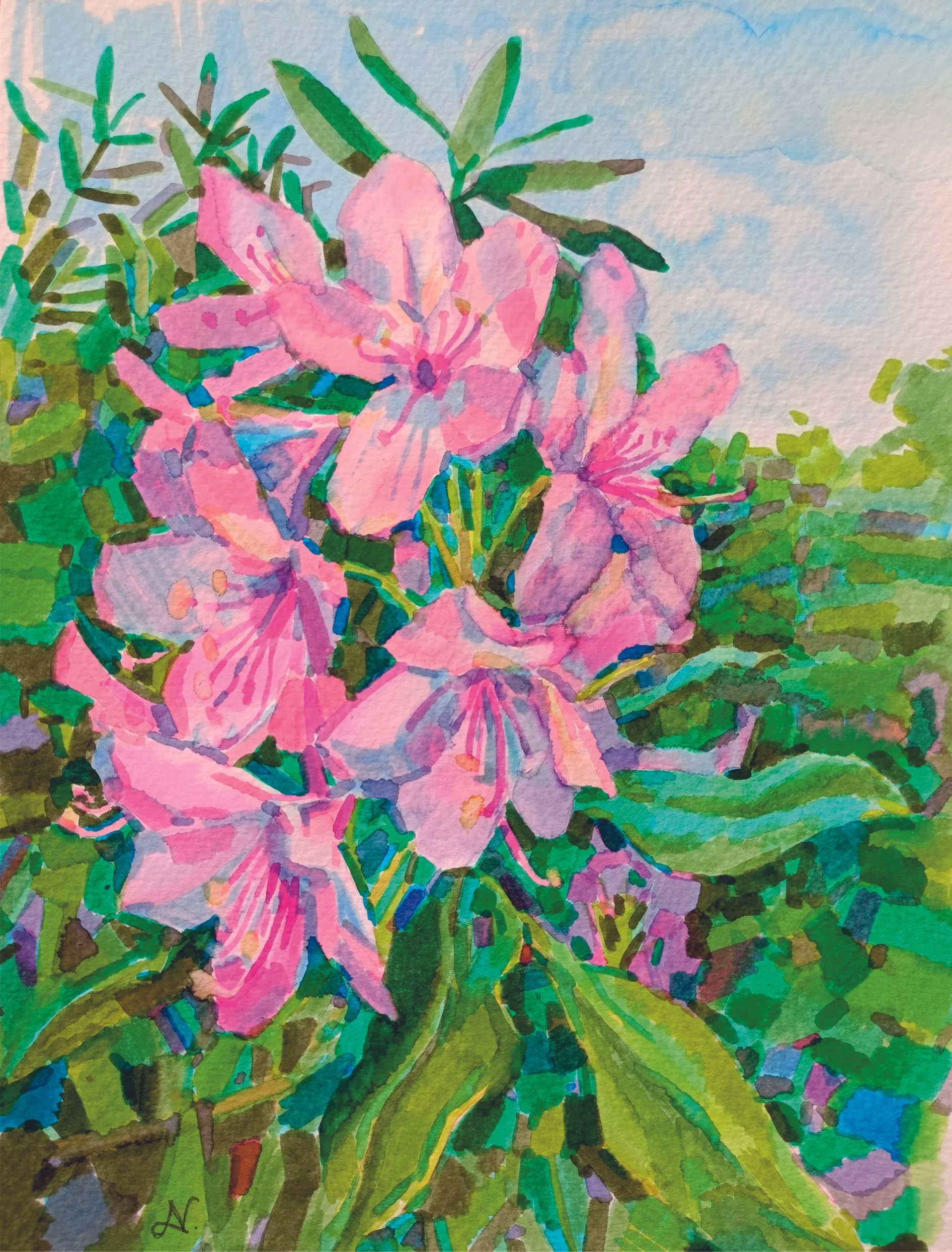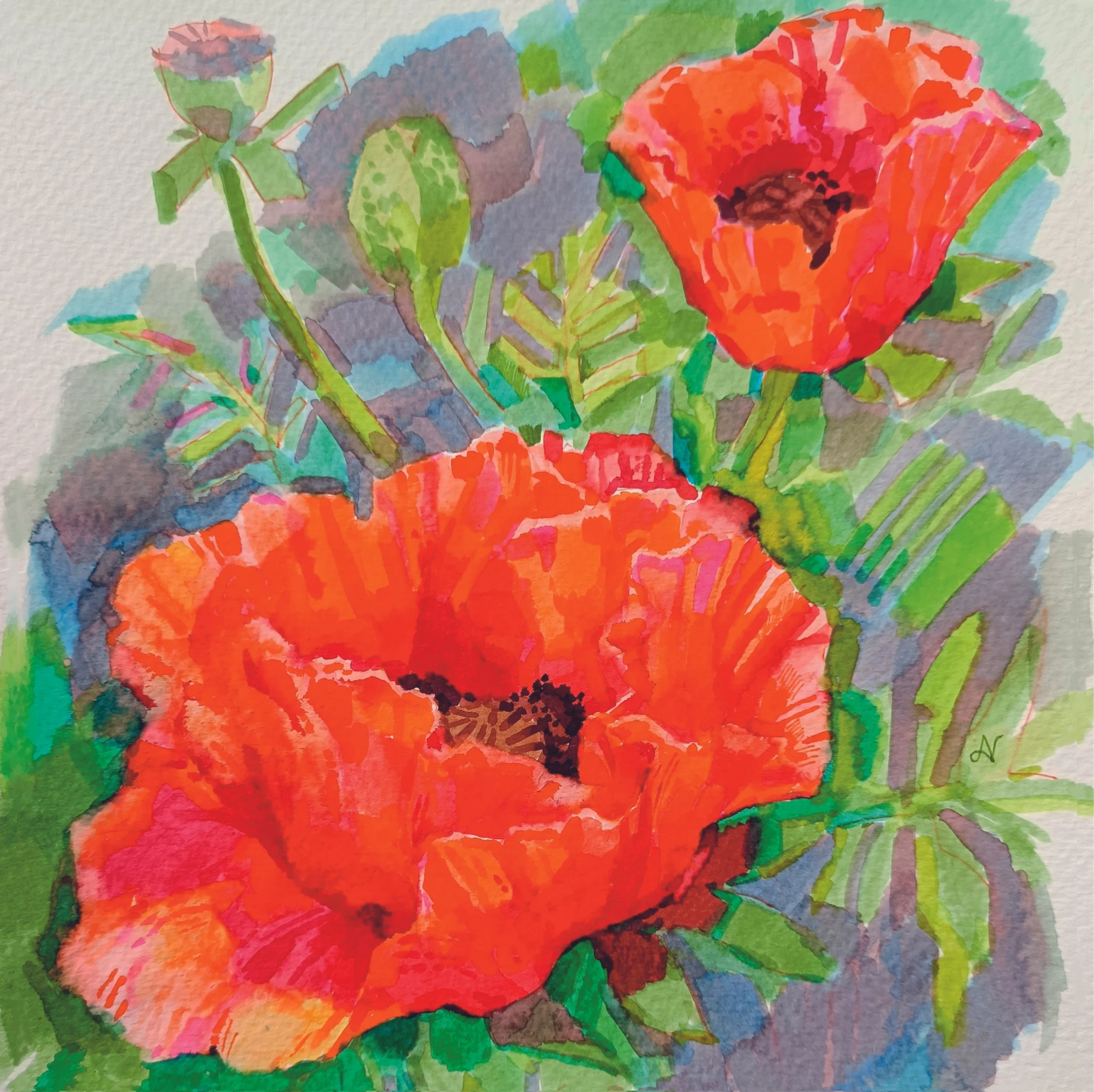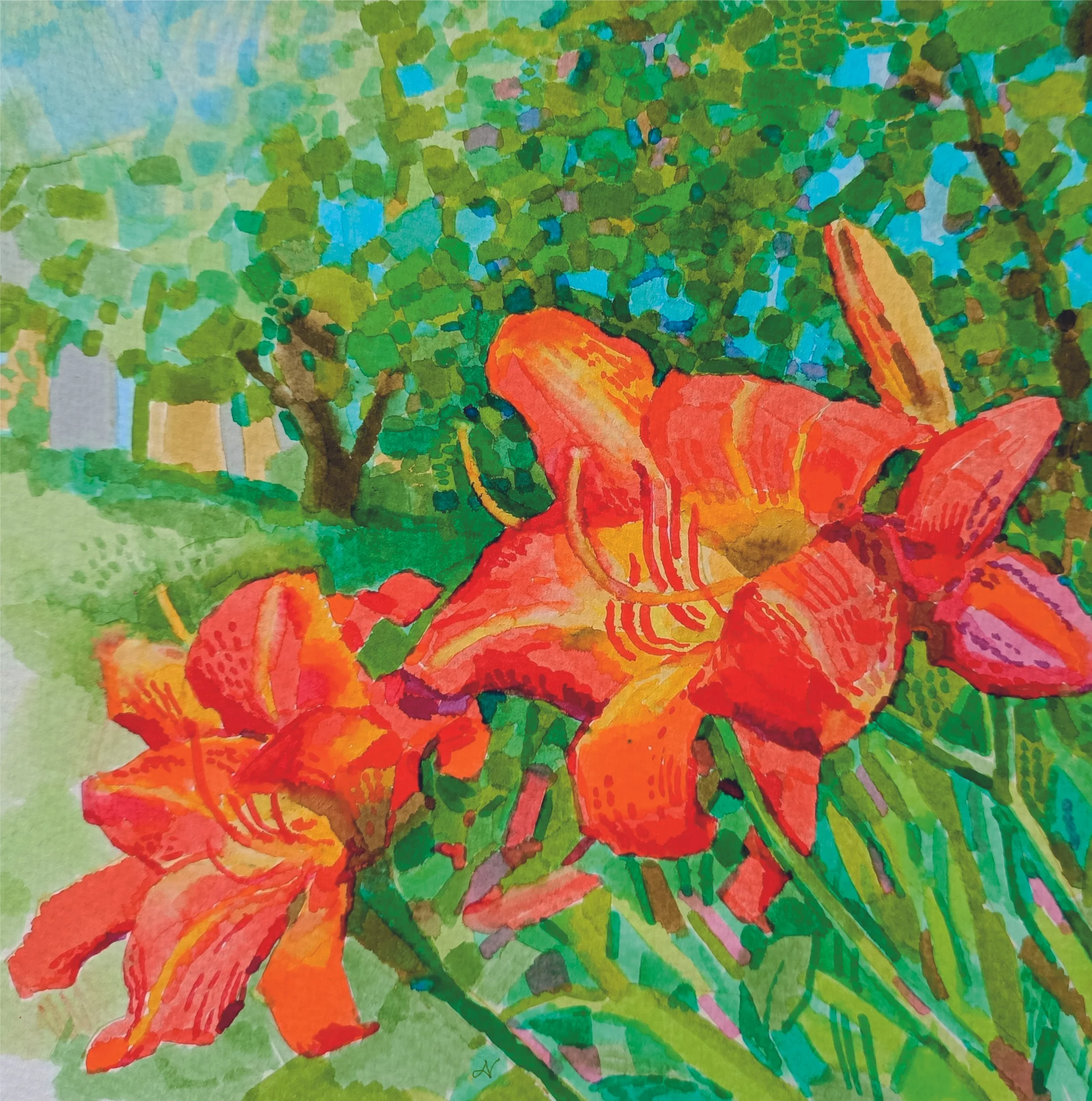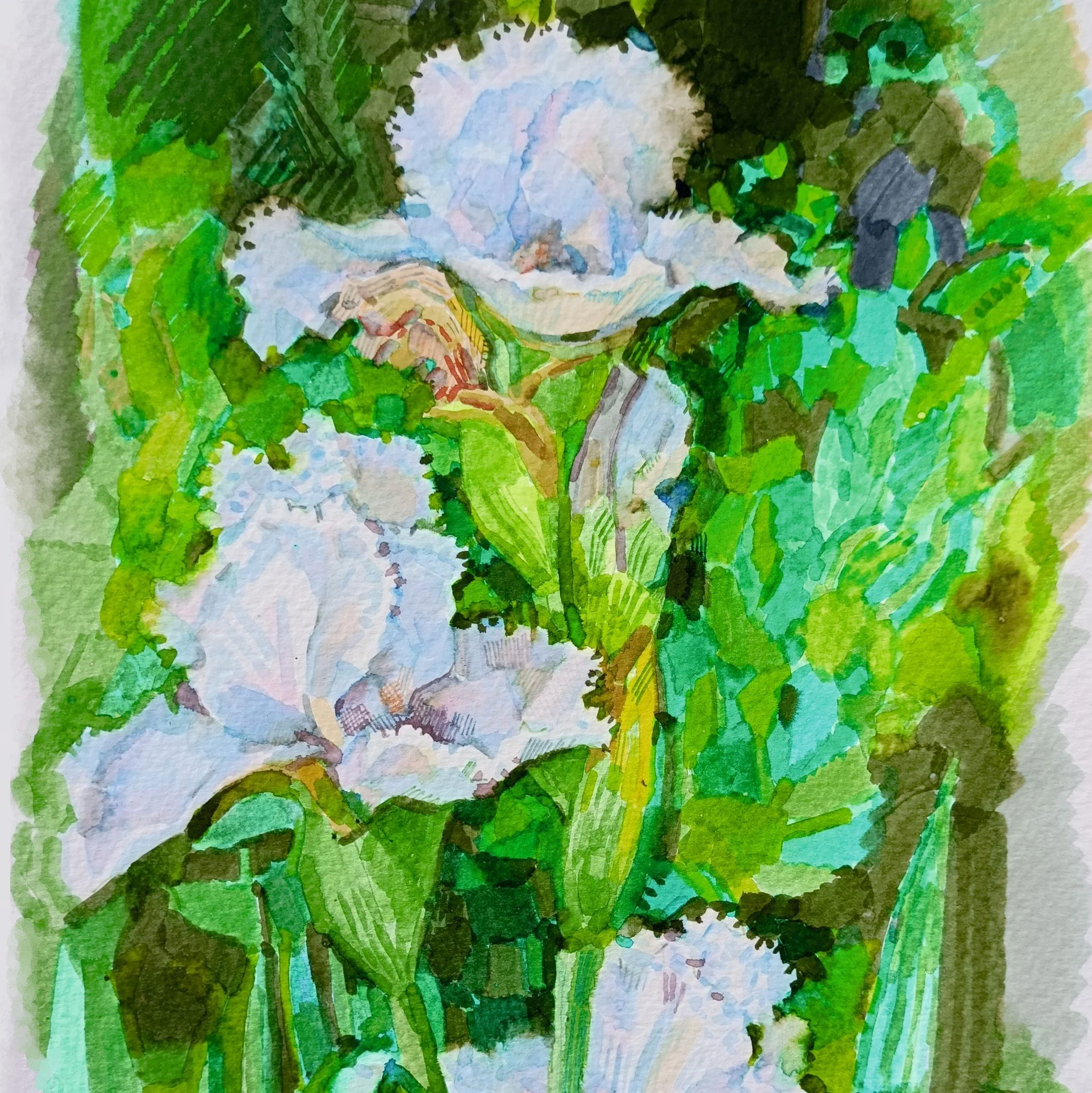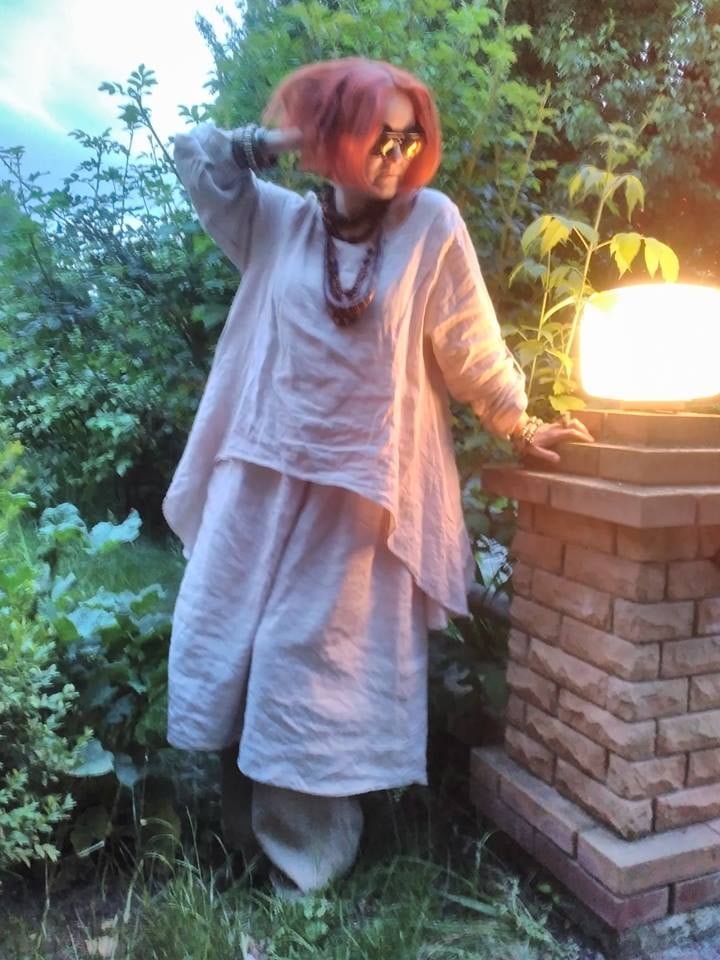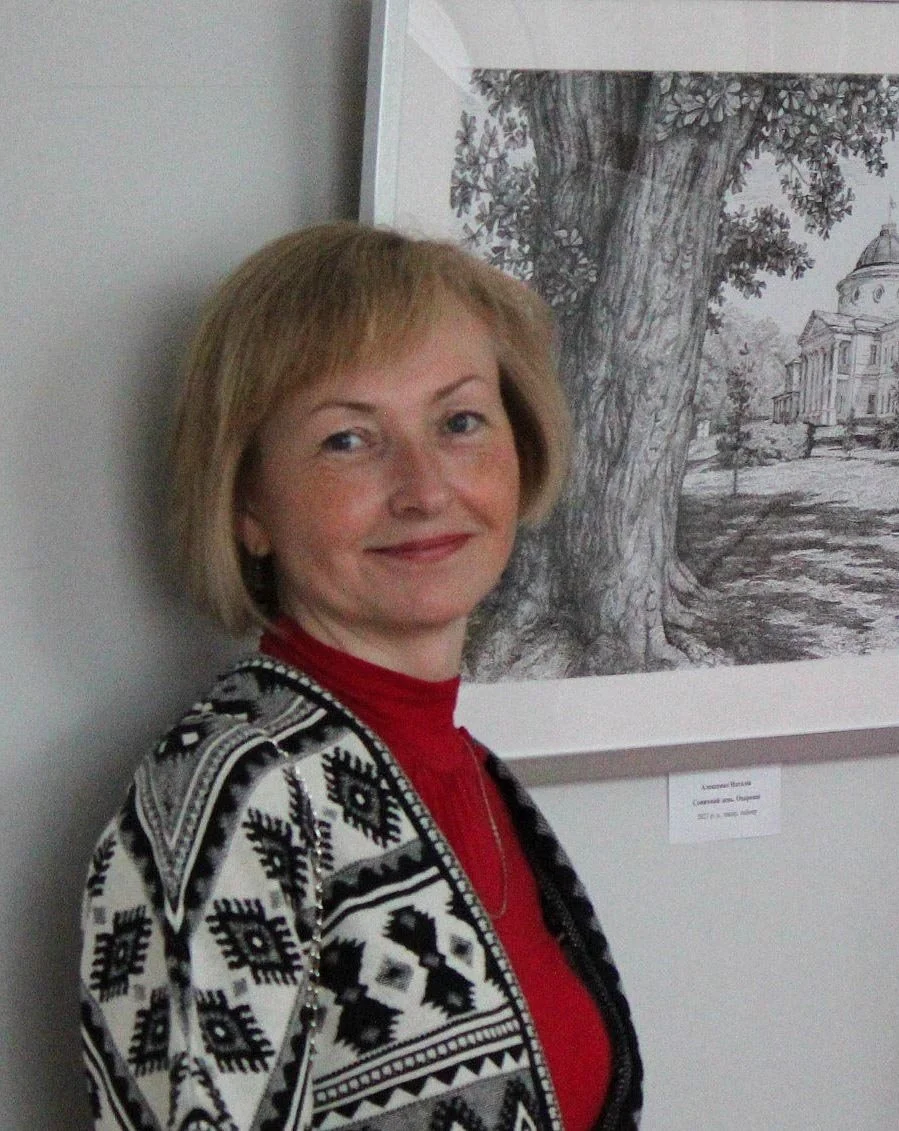Anna Miller featuring Ukrainian Artists:
All proceeds will go to the artists
Oleksii Ovchynnikov
"Songs from Underground"
I was born in Kyiv, in a creative family. On my mother’s side, everyone was artists; on my father’s side, musicians. So it was only natural that my first passions became drawing, and later, music. It was a happy childhood.
I started drawing when I was about three years old. I drew a great deal. This was mostly thanks to my mother, who herself was an artist. She was a role model for me, gave me many art books, took me to exhibitions, and so on. Throughout my childhood and youth, I was surrounded by art and an artistic atmosphere. Among the artists who influenced me, besides my mother (Olena Vasylivna Ovchinnikova), I can also name the Ukrainian artists Heorhii Malakov and Anatolii Bazylevych. Although in reality, there were many more.
In time, I graduated from art school and the art institute, receiving a classical education as a graphic artist. After my studies, I started working in various advertising agencies, where I had to master computer-based, digital graphics and different programs.
I work in various techniques, all of which can be viewed on the web resource where I publish my works. As for digital collages—I have been doing them since the mid-2000s. It is one of my favorite techniques. Besides collages, I enjoy caricatures and cartoons. I create works both by hand (using pencil or ballpoint pen) and in digital format.
The story behind the “Songs from Underground” series is an episode from my biography in 2022, when I lost my job and was thinking about how to earn a living for myself and my family. At that time, a friend introduced me to the virtual world of NFTs, where, according to her, any artist could supposedly become fabulously rich very quickly. This world was generally dominated by abstract digital art. I am a person very far from abstraction, artificial intelligence, and generative art. The only thing I managed to create were this and a few other series of collages. But I tried in vain to integrate into that system and to understand the tastes of NFT enthusiasts and collectors—this world exists by its own rules. So, after six months, having earned five or seven dollars, I closed that chapter for myself. Too old for contemporary art—what a shame.
Why skulls and flowers? I think they symbolize the coexistence of life and death, beauty and decay—topics that were and still are relevant during the war and times of hardship. In the environment where I live. In the environment where all of Ukraine lives.
Now I am a soldier in the Armed Forces of Ukraine. Fortunately, I can remain an artist even in the army, which needs people of all kinds of professions—even ones as exotic as mine.
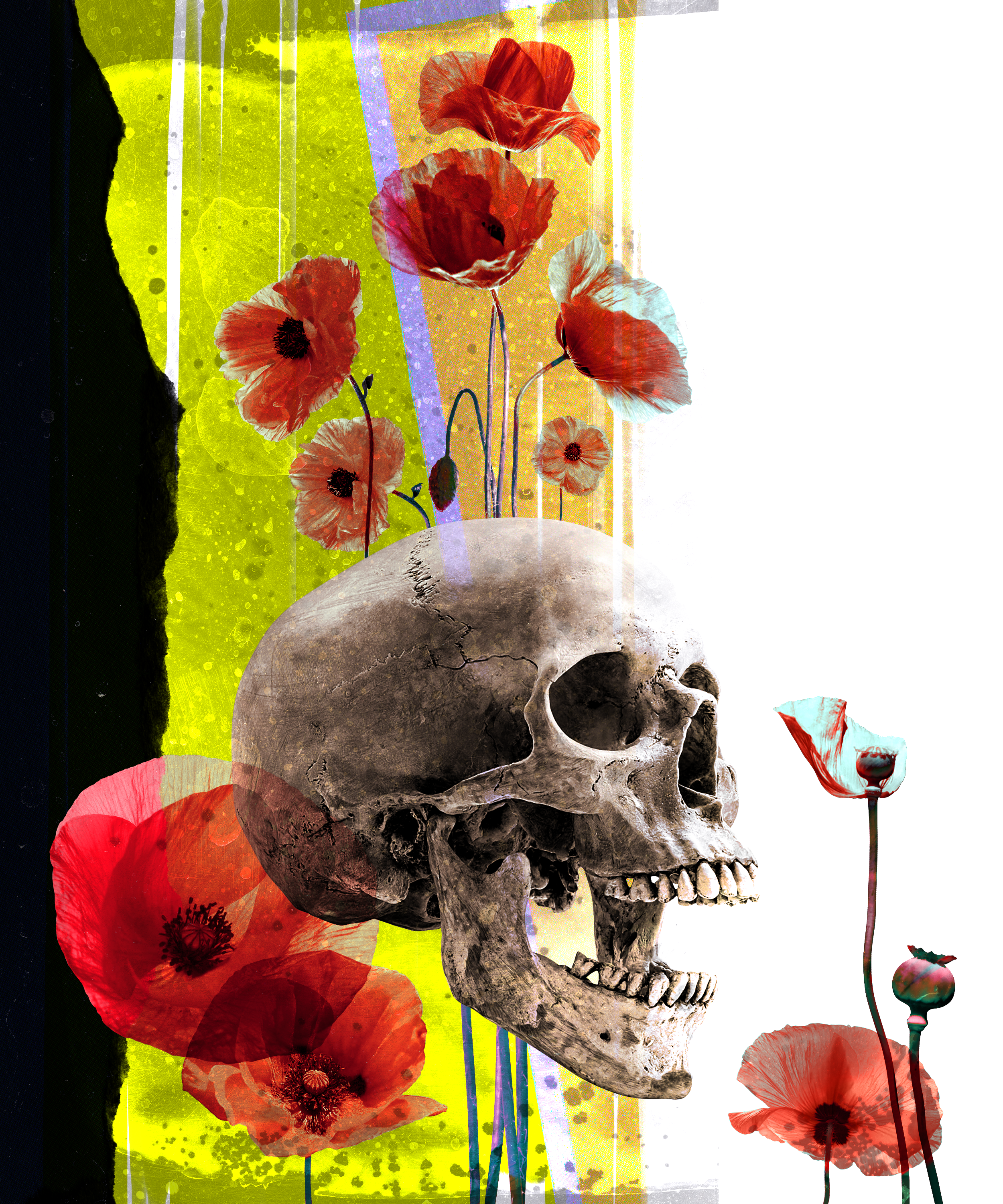



Svetlana Fesenko
“Artist’s Garden”
Regarding my floral watercolors — essentially, they are “portraits” of flowers from my own garden, which I have grown myself. For me, it is both a place of strength and a kind of antidote during the war. After all, there is nothing more radically opposite than the explosions of Russian rockets and the delicate flowers in your garden. That’s why my drawings of flowers are a form of resistance to the war, a way to preserve inner balance.
I love to paint because it is in my blood — I have always done it, ever since early childhood. Now, painting has become an honest form of art therapy that helps me maintain my mental health during the war. Watercolor technique allows me to capture all the nuances of the living — rather than the dead — and this is especially important to me.
I was born in Kyiv. My parents were not artists, but they always supported my desire to draw and to study art. I started drawing as soon as I could stand on my feet — my first drawings were on the wallpaper when I was about a year and a half old.
I believe that professional artistic education is extremely important: it provides knowledge and craftsmanship that complement natural talent. I love different techniques and am constantly experimenting — I work with watercolor, gouache, water-soluble graphite, charcoal, and many other materials. Every creative task requires its own approach and tools.
I really love the still life genre, so most often I paint still lifes. Because objects, unlike people, don’t lie.
I didn’t choose to become an artist — I have always been one. It is my destiny.



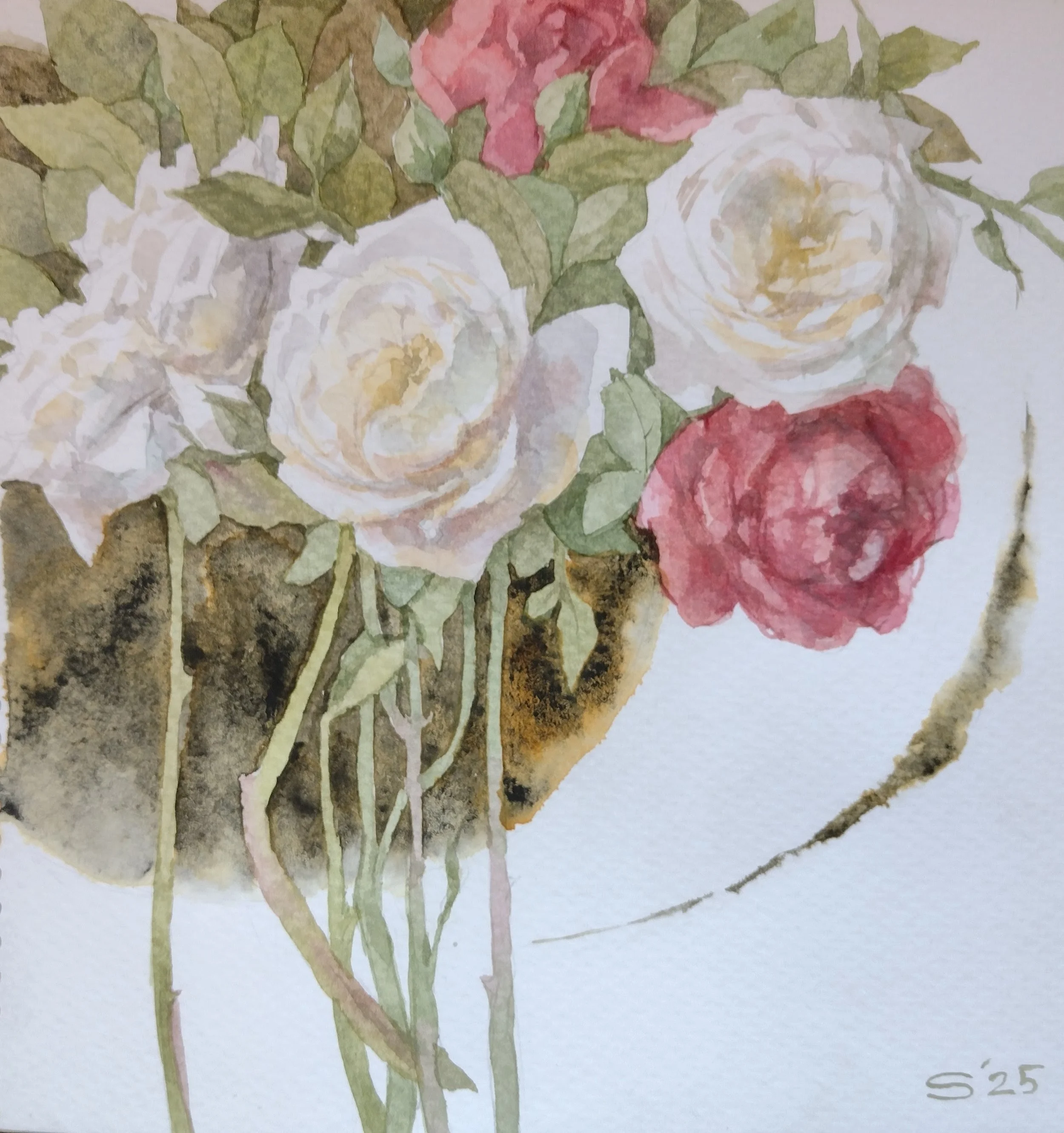
Nataliia Aleksenko
“Finding Strength”
I was born in Kyiv into a family not directly connected to the arts, yet my parents always encouraged and supported my creative pursuits.
From early childhood, I was drawn to drawing and painting. I received formal training at a specialized art school and later continued my studies at the Academy of Arts, where I specialized in Graphic Arts with a focus on book illustration.
My professional practice includes design and illustration for both children’s and adult literature. I work across a variety of media—watercolor, acrylic, gouache, and digital graphics—and also create easel works in ink and liner. In addition, I have developed a unique series that combines acrylic painting with micro-mosaic techniques using beads.
I am a member of the National Union of Artists of Ukraine and actively participate in national art and exhibition projects.
I recently discovered the technique of watercolor markers and began painting flowers. Why flowers? Because my country is at war. Around me there is death, pain, despair, hatred, and fear—heavy emotions that weigh on the spirit. Painting flowers and nature helps me release negativity and find strength in this difficult time. More than ever, I feel the fragile beauty of the world in every blossom and feel a deep urge to capture and preserve it on paper.
For me, being an artist is not just a profession or a form of creative expression. It is a way of communication, a way of connection, and a way of exploring both the outer world and my own inner self.
